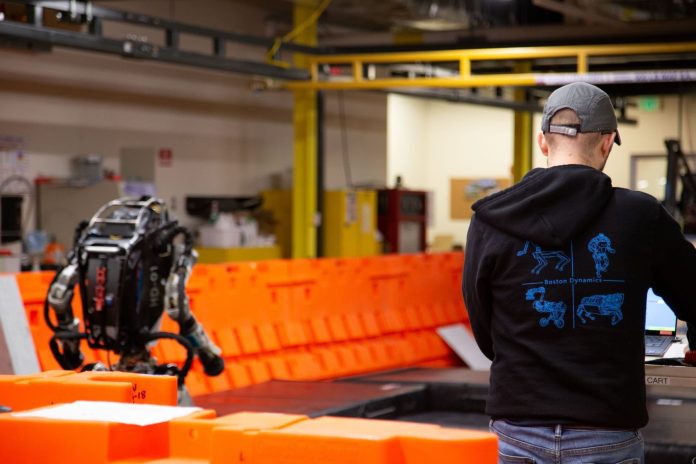Hyundai Motor Group has agreed a $1.1 billion deal with Softbank to acquire an 80 percent stake in US-based robotics company Boston Dynamics. Japan-based telecoms group Softbank will retain a 20 percent stake in the firm, and contribute alongside as Hyundai looks to bring advanced robotics into its automotive and industrial automation portfolio.
South Korea based group Hyundai has interests in steel, construction, machine tools, and logistics, among other industries, besides its consumer reputation in the automotive market. It wants to leverage Boston Dynamics’ know-how to accelerate its ‘smart mobility solutions’ profile, which covers supply of automation tools for driverless vehicles, as well as for unmanned aerial vehicles (UAVs, or drones) and UAV management systems (UAMs).
It is also looking to establish itself as a provider of Industry 4.0 tools for ‘smart factories’, running the gamut from “from robot component manufacturing to smart logistics solutions”. The firm highlighted its investment record in the smart mobility space, with deals in the fields such as “autonomous driving technology, connectivity, eco-friendly vehicles, smart factories, advanced materials, artificial intelligence, and robots.”
Softbank acquired Boston Dynamics from Google’s parent company Alphabet in 2017. It develops humanoid / animaloid robots with names like Atlas, Spot, and Handle. Its four-legged Spot robots gained coverage earlier this year when Singapore announced it was trialling them to assist with social distancing measures in parks, gardens, and nature reserves.
The company has sold “hundreds of robots” in a variety of industries, such as power utilities, construction, manufacturing, oil and gas, and mining. It plans to expand the Spot product line early next year with an enterprise version of the robot with greater levels of autonomy and remote inspection capabilities, and the release of a robotic arm, billed as a “breakthrough” in mobile manipulation.
It has a new computer vision solution to automate pallet operations in the logistics sector, called Pick, ready to go in 2021. Hyundai said: “Service robots like Spot have the potential to perform dull, dirty, and dangerous tasks in settings where automation has been challenging to implement. With its computer vision solution, Pick, for depalletizing and its mobile warehouse robot, Boston Dynamics will expand Hyundai’s footprint in logistics robots.”
Hyundai described its own artificial intelligence (AI) and human-robot interaction (HRI) expertise as “highly synergistic” with Boston Dynamics’ knowhow in robot-based perception, navigation, and intelligence. Boston Dynamics will get access to Hyundai’s “manufacturing capability and cost benefits”, said Hyundai.
It added: “The investment in furthers Hyundai’s portfolio of technology that addresses opportunities for both service robots and logistics robots… Over time, Hyundai plans to expand its presence into the humanoid robot market with the aim of developing humanoid robots for sophisticated services such as caregiving for patients at hospitals.”
Euisun Chung, chairman at Hyundai, said: “The synergies created by our union offer exciting new pathways for our companies to realize our goal – providing free and safe movement and higher plane of life experiences for humanity. We will also contribute to the society by enhancing its safety, security, public health amid global trends of aging society and digital transformation.”
Masayoshi Son, chairman and chief executive at Softbank, said: “We are thrilled to partner with Hyundai, one of the world’s leading global mobility companies, to accelerate the company’s path to commercialization. Boston Dynamics has a very bright future and we remain invested in the company’s success.”
Robert Playter, chief executive at Boston Dynamics, said: “Boston Dynamics’ commercial business has grown rapidly as we’ve brought to market the first robot that can automate repetitive and dangerous tasks in workplaces designed for human-level mobility. We share a view of the transformational power of mobility and look forward to working together to… enable the world with cutting edge automation.”

